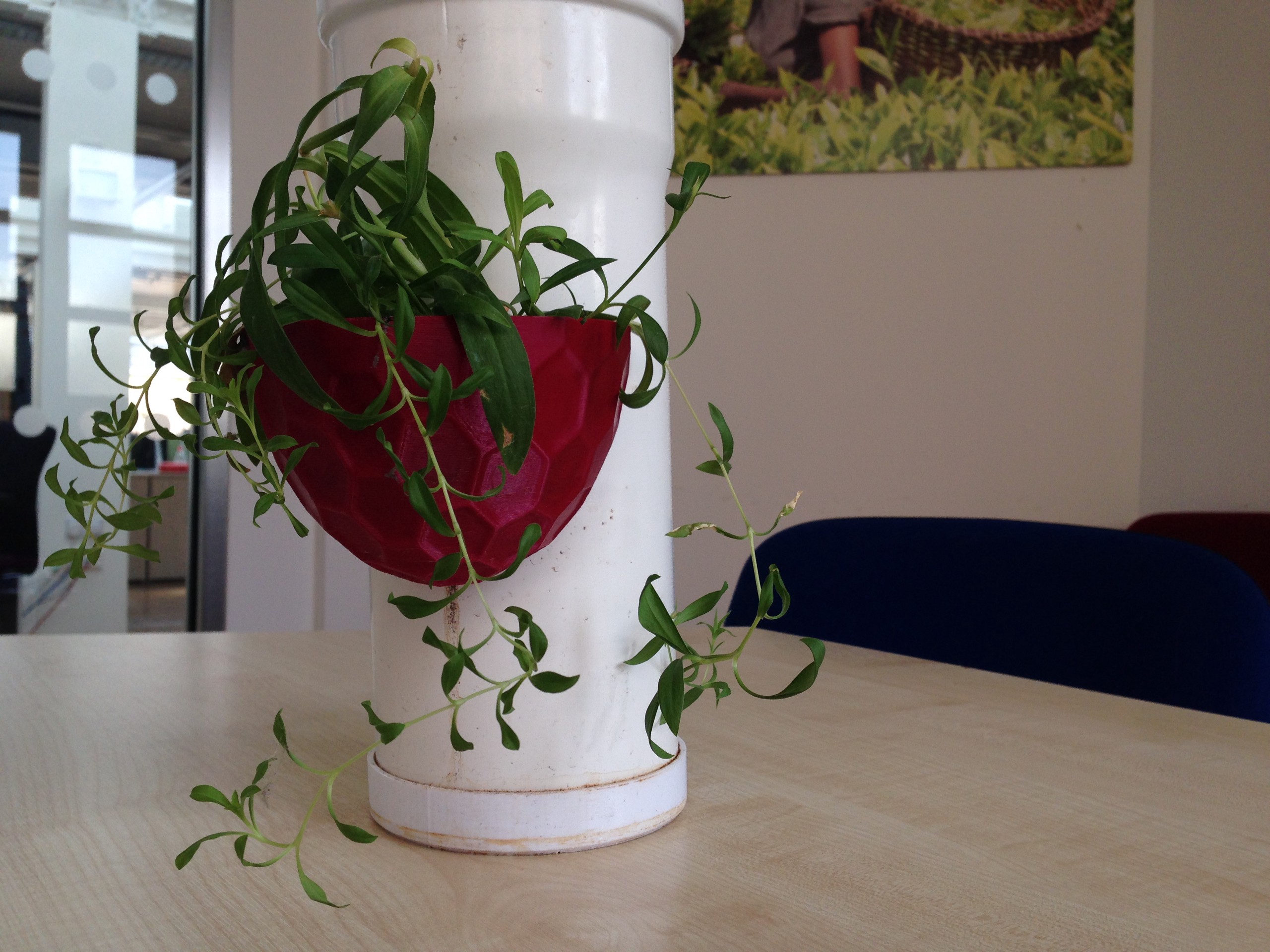
Camilla Gordon wants to change the way we think about technology. She’s hoping a modified drainpipe she’s brought back from Kenya might help her do this, though she’s not entirely sure what she’s going to do with it yet.
The drainpipe in question sits on the desk of a meeting room at the Cafédirect Producers’ Foundation offices in Central London. It’s not any old bit of drainpipe. It is one transformed–via the help of some 3D-printed bulbs acting as plant pots–into a miniature, vertical farm. This is the result of an innovation challenge held last January for Cafédirect farmers in Nandi Hills, Kenya, who worked with product designer Barney Mason. Participants were asked to imagine a Kenyan family had moved from rural areas to a city. They didn’t have any outdoor space in their new home but still wanted to continue growing some food. The pipe was the solution. Camilla suspects it was partly inspired by people leaning a bag of soil up against a wall and placing a few planted crops in it–a practice she’s seen in many of the farms she’s visited.
The fair-trade coffee company Cafédirect established CPF in 2009 by working with around 280,000 smallholder tea, coffee, and cocoa farmers across Africa, Latin America, and Asia. Gordon and her colleague Katie Messick excitedly pull out a set of posters showcasing more innovations they’ve learned from the farmers with whom they work. At one farm they visited, the smallholder had replaced the top of a water tap with a lock, so it’s secure (instead of turning the faucet, you turn a key). They were amazed by the ingenuity, but the man who invented it just shrugged and said, “Of course I put a lock on it. I didn’t want people stealing my water.”
Gordon and Messick hope that talking more about farming innovation will help its growth and change attitudes globally. WeFarm, CPF’s peer-to-peer communications network, recently won a Google Impact challenge for its SMS-based method for bringing the hive mind of the the Internet to those with no web connectivity, tapping into a pool of volunteers to translate questions, answers, and ideas shared by farmers from across the globe. “Technology isn’t just something the West sends to Africa. There is so much more to it than that,” Gordon added.
But back to that pipe. It is still a prototype and CPF isn’t entirely sure where it’ll go next. This is where fundraising comes in. One idea is to market it alongside Cafédirect products. CPF has thought about working with Fab Labs or producing kits, perhaps selling part of the process of making and tinkering as much as the finished product itself. Another option is to include the drainpipe as part of a book on farmer innovation; raise some money, but also use it as a communication tool to showcase ingenuity. If you have any bright ideas, Gordon is happy to hear them. You can contact her through the Producers’ Foundation.

How We Get To Next was a magazine that explored the future of science, technology, and culture from 2014 to 2019. This article is part of our The Future of Food section, which covers new innovations changing everything from farming to cooking. Click the logo to read more.

